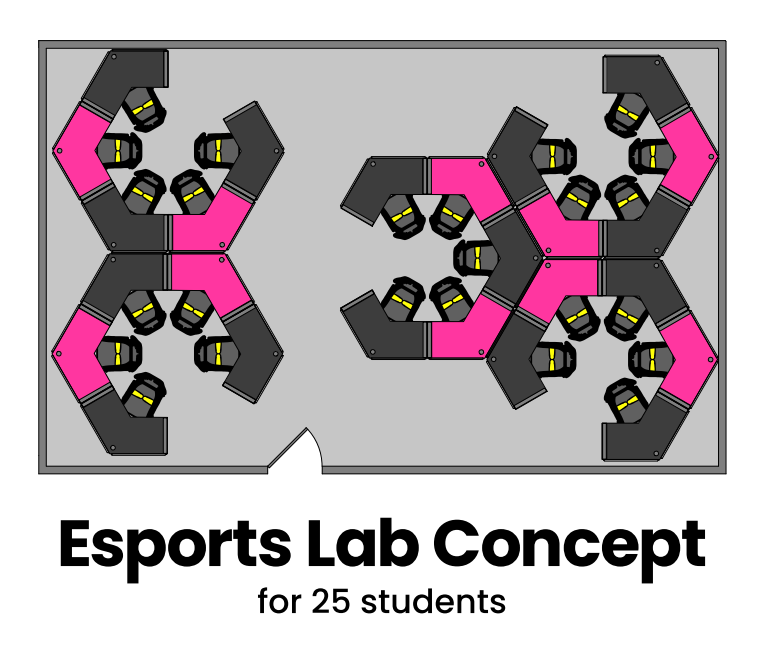
The National Association of Collegiate Esports (NACE) was founded in 2016 to support esports in higher education. Since then, many schools have developed competitive esports programs, focusing on popular games – Valorant, League of Legends, Overwatch, and Rocket League, among others – that resonate with both club players and varsity competitors. For example, the University of California Irvine, Ohio State University, and the University of Texas at Arlington field esports teams, among dozens of other schools in the US that participate in major collegiate leagues and tournaments.
SMARTdesks® designs innovative, technology-integrated spaces for higher education, offering customizable solutions that adapt to evolving needs. When it comes to designing esports labs and arenas, facilities managers often face unique challenges. Below, we address some of the most common questions, from ergonomic design to budgeting for a new esports facility.
What are the key infrastructure requirements for building an Esports facility (e.g., space, electrical capacity, internet bandwidth)?
Fast and stable internet is crucial for competitive gaming. A dedicated, high-bandwidth fiber connection with low latency is ideal for both players and either broadcasting to in-person spectators or streaming to online viewers. 25 to 100 Mbps download and 5 to 20 Mbps upload speeds per PC station is the baseline speed required to run gaming software smoothly. Redundant connections for backup are also advisable. SMARTdesks® recommends raised access flooring such as SMARTflor® for esports facilities to aid with cable management and distribution of power and data connections. SMARTflor® can easily be installed over existing flooring and has the capacity to route electrical and fiber optic sources to where they are needed most.
How can we ensure the Esports facility is equipped with cutting-edge technology that will stay relevant as the industry evolves?
Design the facility to allow easy upgrades. Modular desks and benching systems and flexible seating arrangements, such as those offered by SMARTdesks® will allow an esports facility to reposition furniture in the room for different competitions as the need arises. A scalable network system is the most important consideration as new games may use additional bandwidth. AV systems should be able to keep pace with upcoming gaming systems several years into the future to reduce the need to switch technology infrastructure frequently.
What are the most important considerations for designing a space that enhances both player performance and spectator experience?
Ergonomically designed seating and workstations for comfort during long hours of play are two important factors. Height-adjustable workstations can increase player mobility and reduce risk of repetitive motion injuries, a common negative health impact of esports.
How can we create an Esports facility that supports inclusivity and provides opportunities for students across various skill levels?
Colleges with new esports programs should also consider joining organizations such as the Network of Academic and Scholastic Esports Federations (NASEF) to promote esports within the university community. Nonprofits such as NASEF offer free scholastic competition opportunities for faculty and students throughout the academic year.
What are the ongoing maintenance and operational costs of running a competitive Esports facility, and how can we budget for them?
Core Takeaways for Building an Esports Lab on Campus
Launching an esports program offers universities a range of significant benefits, although financial costs to implement an esports program should not be overlooked. Esports attracts a diverse group of students, including those with a passion for gaming, technology, and digital media, which can enhance student recruitment and retention. Additionally, these programs create opportunities for community building and school spirit, drawing in spectators and alumni engagement through tournaments and events. By launching an esports program, universities position themselves at the forefront of a rapidly growing industry, preparing students for a range of future careers while enriching campus life. Book a free SMARTdesks consultation today to learn more!


